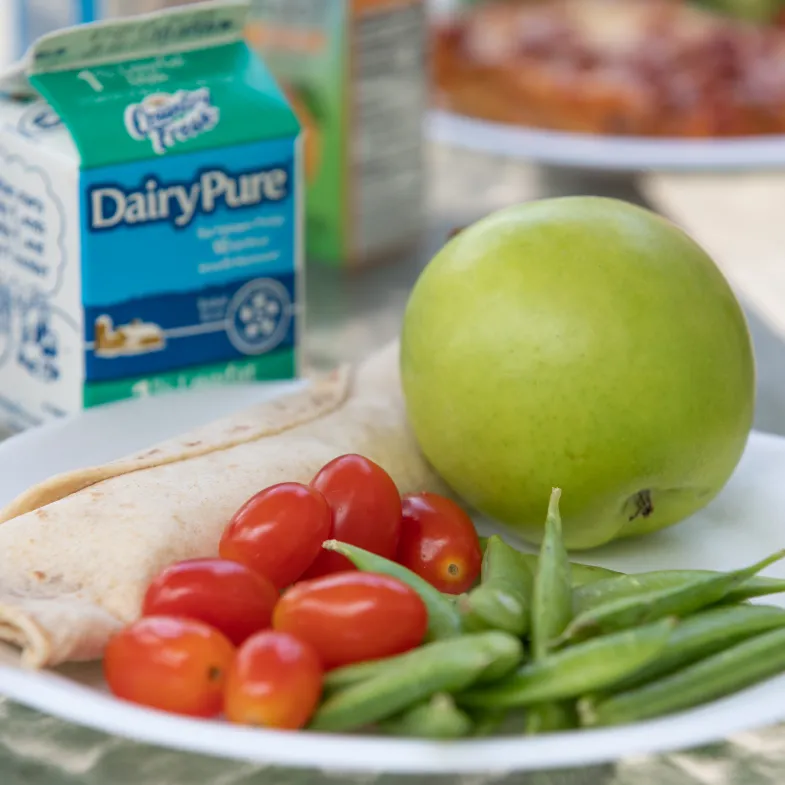When natural disasters like hurricanes hit, confusion often follows - especially around where families can find food assistance. With so much misinformation, it’s important to know the facts. In this guide, we’ll break down the federal nutrition programs designed to support you during times of crisis.
Disaster and Replacement SNAP (D-SNAP)
SNAP (the Supplemental Nutrition Assistance Program) provides ongoing support for low-income families helping them buy groceries.
During natural disasters, the federal government allows additional assistance through the Disaster SNAP program (D-SNAP) for families who already qualify for regular SNAP, as well as for families who may not originally qualify but are struggling due to lost income or damages caused by the disaster. People receiving SNAP may not need to reapply, and the additional benefits related to the disaster will be automatically applied to their cards.
Normally, SNAP regulations restrict families from purchasing hot meals, but during emergency situations, there may be waivers that allow families to use D-SNAP funds to buy prepared meals.
Replacement SNAP allows families to recover meals that may have been lost to the natural disaster. Typically, families must inform the agency within 10 days of the event. Sometimes, grocery benefits are replaced automatically for all SNAP recipients when there is widespread damage.
Flexibilities in School Meals
Millions of children rely on school meals as their main source of nutrition, and when schools close due to a disaster, it can cause anxiety for kids and families. The USDA steps in to allow flexibilities, so schools can continue feeding kids even if the classrooms are empty.
Under special waivers, schools are able to adjust meal distribution alternatives such as grab-and-go free meal sites, food deliveries, parent and guardian pickup, and distribution in shelters and other community locations.
These programs can be available for several weeks or even months. We recommend reaching out to each local school district and monitoring the USDA disaster response page to see the latest updates about what flexibilities are allowed in your community.

Free Meals for Displaced Children
Children who are displaced by natural disasters are automatically eligible to receive free school meals without additional paperwork. School districts can keep lists of the kids impacted to qualify them without the need to collect individual applications. Children who are receiving D-SNAP are also eligible to receive free school meals.
Once a student has been certified for free or reduced-price school meals, they remain eligible for the entire school year and up to 30 days in the next school year (until a new eligibility determination is made).
In some cases, there will be flexibility for school districts and community organizations to provide free meals to all students in areas hit by a disaster.
In times of crisis, no child should go hungry. Federal nutrition programs like school meal flexibilities and D-SNAP are here to provide families with the support they need when they need it most. Staying informed and connected to your local resources can make all the difference. Whether through your child’s school or assistance programs, these resources ensure that food is one less worry for your family during the recovery process. Together, we can make sure every child has the nutrition they need to stay healthy, no matter the circumstances. Learn about the ways SNAP helps kids.
Ways You Can Help:

Donate: 1 dollar can help provide 10 meals* for kids. Your donations help us support meal programs all over the country and help us advocate for policies that will help kids get the meals they need. *Donations help support programs that feed kids; No Kid Hungry does not provide individual meals. Learn more at NoKidHungry.org/OneDollar
Speak up for kids: 1 in 5 kids in the United States is affected by hunger. Tell your lawmaker to protect SNAP and other federal nutrition programs that feed kids.



